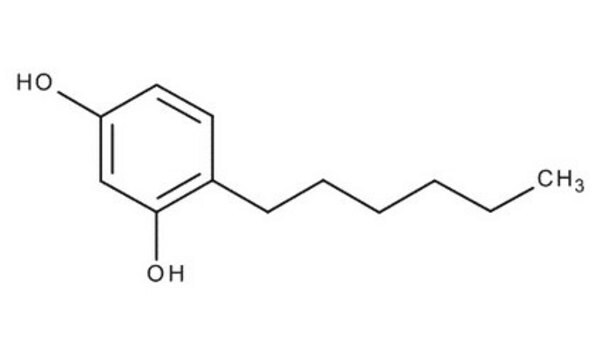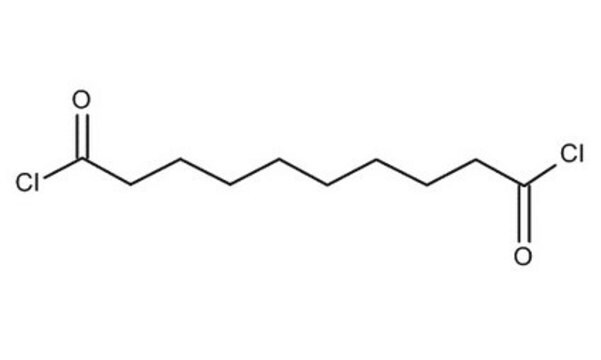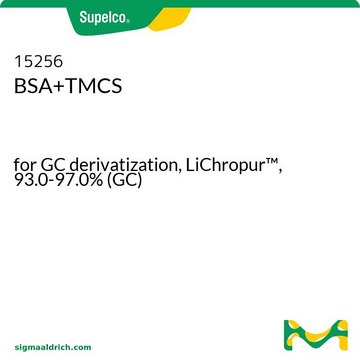E48200
4-Ethylresorcinol
98%
Sinónimos:
2,4-Dihydroxy-1-ethylbenzene
Iniciar sesiónpara Ver la Fijación de precios por contrato y de la organización
About This Item
Fórmula lineal:
C2H5C6H3-1,3-(OH)2
Número de CAS:
Peso molecular:
138.16
Número CE:
Número MDL:
Código UNSPSC:
12352100
ID de la sustancia en PubChem:
NACRES:
NA.22
Productos recomendados
Nivel de calidad
Ensayo
98%
mp
95-98 °C (lit.)
cadena SMILES
CCc1ccc(O)cc1O
InChI
1S/C8H10O2/c1-2-6-3-4-7(9)5-8(6)10/h3-5,9-10H,2H2,1H3
Clave InChI
VGMJYYDKPUPTID-UHFFFAOYSA-N
¿Está buscando productos similares? Visita Guía de comparación de productos
Palabra de señalización
Warning
Frases de peligro
Consejos de prudencia
Clasificaciones de peligro
Eye Irrit. 2 - Skin Irrit. 2 - STOT SE 3
Órganos de actuación
Respiratory system
Código de clase de almacenamiento
11 - Combustible Solids
Clase de riesgo para el agua (WGK)
WGK 3
Punto de inflamabilidad (°F)
Not applicable
Punto de inflamabilidad (°C)
Not applicable
Equipo de protección personal
dust mask type N95 (US), Eyeshields, Gloves
Elija entre una de las versiones más recientes:
¿Ya tiene este producto?
Encuentre la documentación para los productos que ha comprado recientemente en la Biblioteca de documentos.
Los clientes también vieron
Robert Brüninghoff et al.
Environmental science & technology, 53(15), 8725-8735 (2019-07-10)
We evaluated electrochemical degradation (ECD) and photocatalytic degradation (PCD) technologies for saline water purification, with a focus on rate comparison and formation and degradation of chlorinated aromatic intermediates using the same non-chlorinated parent compound, 4-ethylphenol (4EP). At 15 mA·cm-2, and
Magdalena Cygan et al.
PloS one, 13(5), e0195069-e0195069 (2018-06-01)
The physico-chemical and application properties of phenol-formaldehyde resins used in the production of laminated plastics depend on such factors as: type and amount of catalyst, formaldehyde-to-phenol mole ratio, temperature and time of the synthesis process. The special impact on the
C De Bleye et al.
Analytica chimica acta, 888, 118-125 (2015-09-01)
Bisphenol A (BPA) is well known for its use in plastic manufacture and thermal paper production despite its risk of health toxicity as an endocrine disruptor in humans. Since the publication of new legislation regarding the use of BPA, manufacturers
Nuestro equipo de científicos tiene experiencia en todas las áreas de investigación: Ciencias de la vida, Ciencia de los materiales, Síntesis química, Cromatografía, Analítica y muchas otras.
Póngase en contacto con el Servicio técnico











